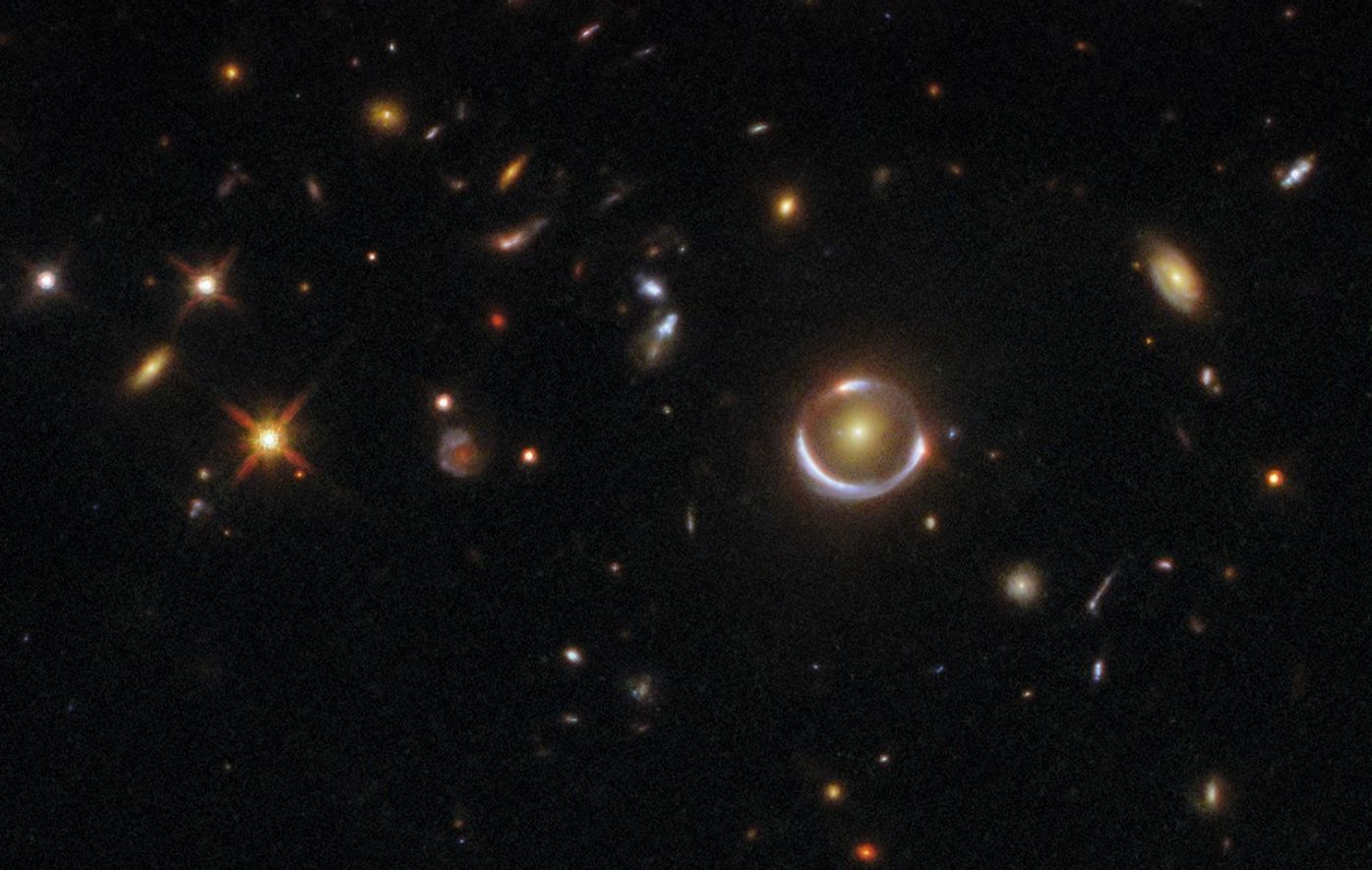2 min read
This NASA/ESA Hubble Space Telescope image reveals a tiny patch of sky in the constellation Hydra. The stars and galaxies depicted here span a mind-bending range of distances. The objects in this image that are nearest to us are stars within our own Milky Way galaxy. You can easily spot these stars by their diffraction spikes, lines that radiate from bright light sources, like nearby stars, as a result of how that light interacts with Hubble’s secondary mirror supports. The bright star that sits just at the edge of the prominent bluish galaxy is only 3,230 light-years away, as measured by ESA’s Gaia space observatory.
Behind this star is a galaxy named LEDA 803211. At 622 million light-years distant, this galaxy is close enough that its bright galactic nucleus is clearly visible, as are numerous star clusters scattered around its patchy disk. Many of the more distant galaxies in this frame appear star-like, with no discernible structure, but without the diffraction spikes of a star in our galaxy.
Of all the galaxies in this frame, one pair stands out: a smooth golden galaxy encircled by a nearly complete ring in the upper-right corner of the image. This curious configuration is the result of gravitational lensing that warps and magnifies the light of distant objects. Einstein predicted the curving of spacetime by matter in his general theory of relativity, and galaxies seemingly stretched into rings like the one in this image are called Einstein rings.
The lensed galaxy, whose image we see as the ring, lies incredibly far away from Earth: we are seeing it as it was when the universe was just 2.5 billion years old. The galaxy acting as the gravitational lens itself is likely much closer. A nearly perfect alignment of the two galaxies is necessary to give us this rare kind of glimpse into galactic life in the early days of the universe.
Explore More Science Behind the Discoveries: Gravitational Lenses Hubble Science Highlights: Focusing in on Gravitational Lenses Hubble’s Gravitational Lenses Facebook logo @NASAHubble @NASAHubble Instagram logo @NASAHubbleMedia Contact:
Claire Andreoli ([email protected])NASA’s Goddard Space Flight Center, Greenbelt, MD
Share
Details
Last Updated Jan 10, 2025 Editor Andrea Gianopoulos Location NASA Goddard Space Flight CenterRelated Terms
Astrophysics Astrophysics Division Elliptical Galaxies Galaxies Goddard Space Flight Center Gravitational Lensing Hubble Space Telescope Spiral Galaxies The Universe Keep ExploringDiscover More Topics From NASA
Hubble Space Telescope
Since its 1990 launch, the Hubble Space Telescope has changed our fundamental understanding of the universe.
Hubble Online Activities
Hubble’s Night Sky Challenge
Hubble e-Books
Read More Details
Finally We wish PressBee provided you with enough information of ( Hubble Rings In the New Year )
Also on site :
- Trump cuts tariffs on U.K. cars, steel and aluminum but keeps 10% base duty while Britain trims its taxes on 2,500 U.S. products
- ‘Shadow Force’ Review: Two Spies Get Dragged From the Cold in Middling Action Opus
- T.J. Maxx Is Selling a Luxury, Line-Smoothing Eye Cream for Less Than $20

